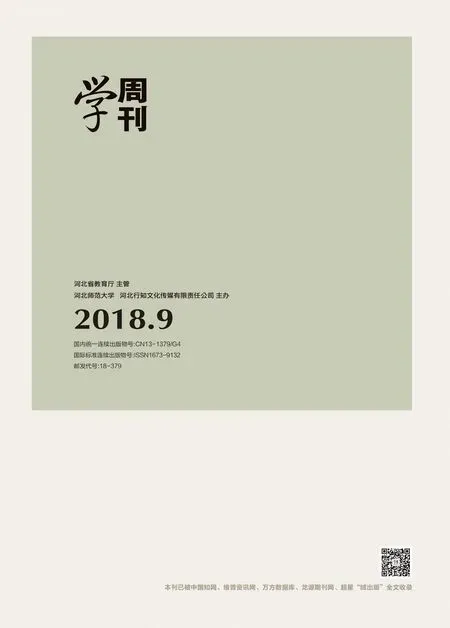The Role of Output in Second Language Acquisition
李志远 (东北电力大学外国语学院 132012)
The Role of Output in Second Language Acquisition
李志远 (东北电力大学外国语学院 132012)
Output isamajor terminal action in second language acquisition.For this action scholars have carried out a greatnumber of researches.Among them one of themost famous is Output Hypothesis.This paper mainly reviews Output Hypothesis and then examines its positive role in the process of second language acquisition(SLA).
input positive role second language acquisition
Ⅰ.Introduction
Itwas not until the late twentieth century thatsecond languageacquisitionwas regarded as an independent discipline,with the development of which arose a lot of theories,in themidst of which,Swain’sOutput Hypothesis is among one of the most influential.In her theory,Swain clearly pointed out the positive role ofoutput in SLA.This papermainly reviews the Output Hypotheses and discusses its positive role in the process of second language acquisition and finally draws the conclusion.
Ⅱ.An Overview ofOutputHypothesis
Output Hypothesis was put forward by the Canadian linguist Merrill Swain in 1985.Based on her research on the French immersion students’language ability,Swain challenged the reliability of the Input Hypothesis.She studied the French immersion programs in Canada, whose aim was to develop English students’French ability through teaching theirother disciplines in French.By testing,Swain found that though these students’ability on listening comprehension,language fluency,and discourse functions were good,yet,their grammatical accuracy was not that satisfactory.As a result, Swain proposed the “Comprehensible Output Hypothesis”.
Swain claimed that“producing output is one way of testing a hypothesis about comprehensibilityor linguisticwell-formedness”.Second language learners test their language correctness through their output.By the metalinguistic reflection function,Swainmeans“output can serve to controland internalize linguistic knowledge”.
Ⅲ.Enlightenments ofOutputin Assisting Second Language Acquisition
Input is crucial in SLA,however,output should no阿tbe neglected.In order to putwhat we have input into our own language ability,we must have enough output.Output not only enhances our language fluency but also increases our language accuracy.
In the output process,we should not only pay attention to the style but the content of the outputandweshould always try our best to pick out the new language thatwe have got in our input to internalize thatknowledge.
As for thewaysofoutput,therearealsovarious.The first is sentencemaking.We can use some words or phrases to make up sentences, translate sentences,recite and retell paragraphs and make some questions according to the passages and then answer by ourselves.Second is interaction.For thismethod,we can find someone thatwe can speak the target language with and practice.Some easy conversations can be the starters.Then with the development of the pair, difficultwordsor phrases can be added.A third way can be rewriting.After readingsomethingwe can rewritewhatwe have read in our own language.Thiskind ofexercise canmakeus practice differentkindsof language skills.Forexample,we can useantonymsand synonyms in our rewriting to develop ourunderstanding and analyzingability.Fourthly,we can make some plays and act them out to output our language knowledge. Fifthly,discussion,debate,and speech are good outputmethods for us to practice second language.In aword,weshouldmake anyuseofopportunity to produce our second language and makeouroutputasmuchaspossible.
Ⅳ.Conclusion
In recentyears,moreandmore people start to join the area of language acquisition research. Among the researchers and researches,Swain’s Output Hypothesis is of crucial importance. Swain based on her study found out that input only can not facilitate the language learners’language ability.Therefore,she proposed the Output Hypothesis and emphasized the important role ofoutput in language acquisition.Actually,both input and output are essential to second language acquisition.As a result,we should make full use of these two factors and get as much as input as well as output as possible to make our language acquisition faster and more accurate.
Works Cited:
[1]Swain,Merrill and Yang Luxin.Output Hypothesis:ItsHistoryand Its Future[J].Foreign Language Teachingand Research,2008(1).45-49.
[2]谭志敏.输入,输出与情感过滤理论在大学听力教学中的应用研究[D].北京:北京第二外国语学院,2008.
(责编 张景贤)
李志远(1985— ),男,吉林省吉林市人,文学硕士,讲师,研究方向:应用语言学、翻译与跨文化研究。

